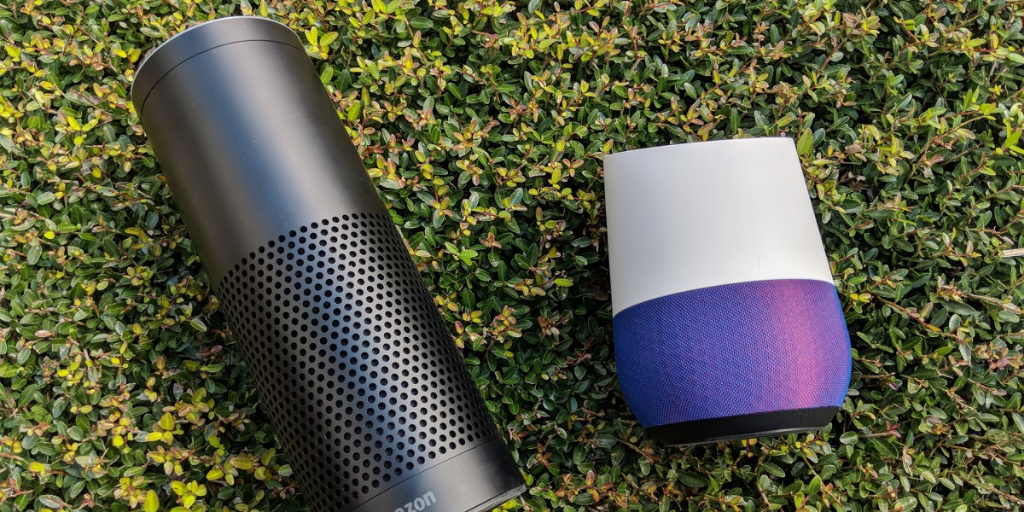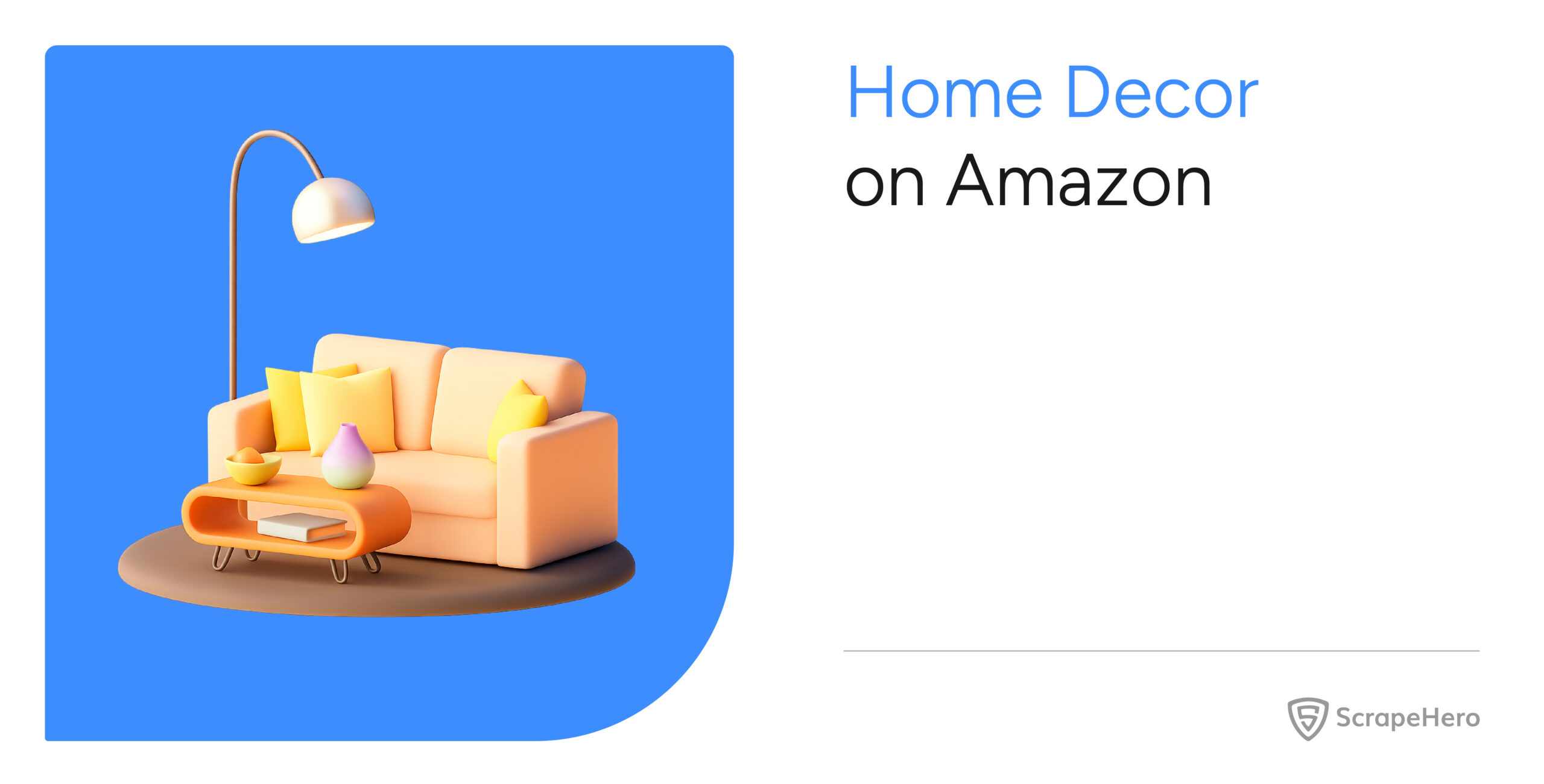Voice-enabled technology has evolved over the years and fundamentally changed the way people find, consume, and act on information. 50% of all searches will be via voice by 2020 and 30% of searches without even a screen. Voice shopping will be a major phenomenon within the next three years and 31 million Americans are expected to shop via smart speakers in 2019.
We collected all the reviews posted on BestBuy, Walmart and Amazon for the top smart speakers – Amazon Echo 2nd Gen, Amazon Echo Plus 2nd Gen, Apple HomePod, Google Home and Sonos One and performed sentiment analysis on their reviews.
Top Smart Speakers Comparison
Here is a comparison chart showing the important features of all the top smart speakers that we will go through in this post:
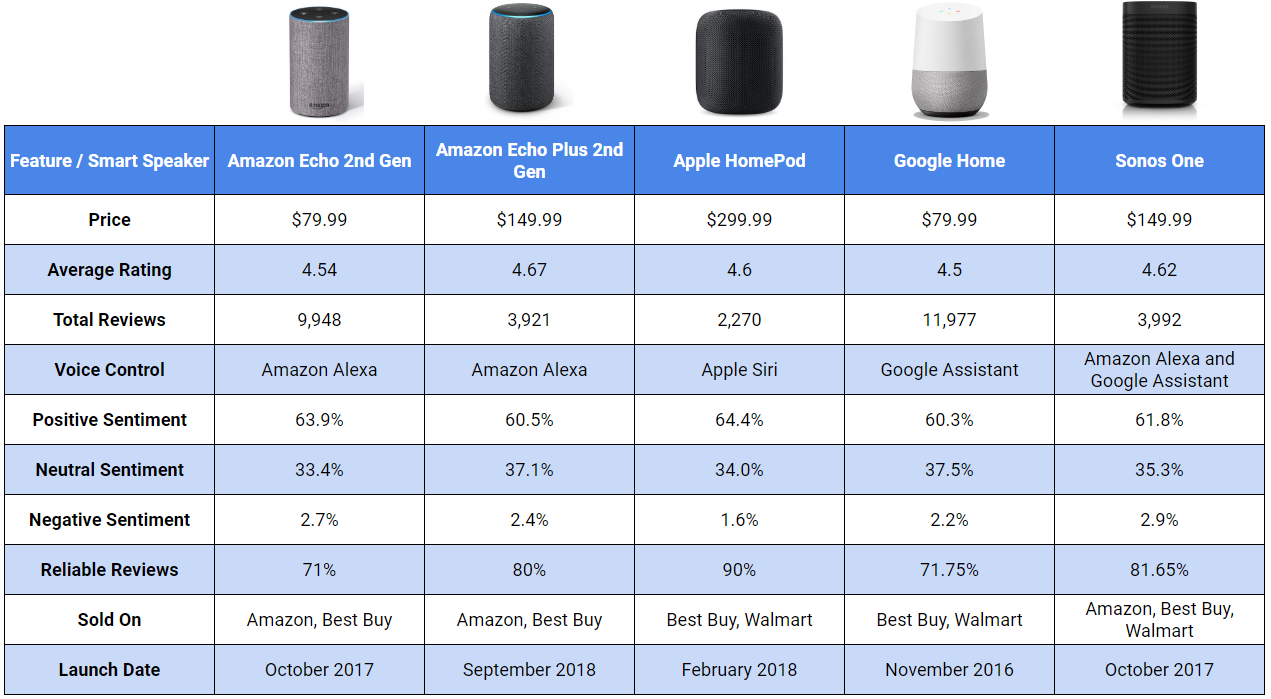
- BestBuy is the only website which lists all the smart speakers.
- Amazon does not sell Apple Homepod and Google Home on its site.
- Walmart does not list Amazon smart speakers on its website.
Tracking customer opinions over a period of time, identifying the root cause and minimizing negative sentiments towards your brand helps in improving customer experience. Brand monitoring can analyze and track how many users have a positive sentiment towards the competitor’s product which helps target new customers and retain existing ones.
Customer Sentiments for Smart Speakers
The graph below shows the percentage of positive, negative and neutral sentiments that customers have displayed towards these smart speaker brands. This was possible by performing sentiment analysis on the online reviews written for these products:
- Blue denotes the percentage of positive sentiment
- Pink denotes the percentage of neutral sentiment
- Yellow denotes the percentage of negative sentiment
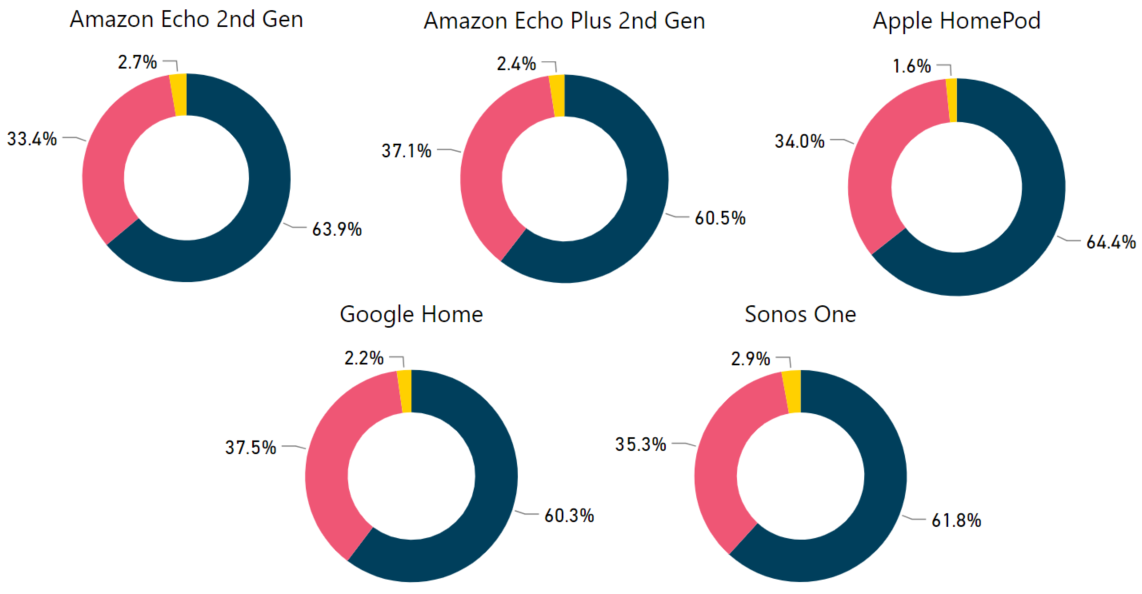
Apple Homepod fares better in customer sentiment as it has the highest positive sentiment (64.4%) and the lowest negative sentiment (1.6%).
Amazon Echo 2nd Gen has the second-highest percentage of positive sentiment (63.9%). Google Home has the highest neutral sentiment (37.5%) and Sonos One has the highest negative sentiment (2.9%).
How do Customers describe Smart Speakers?
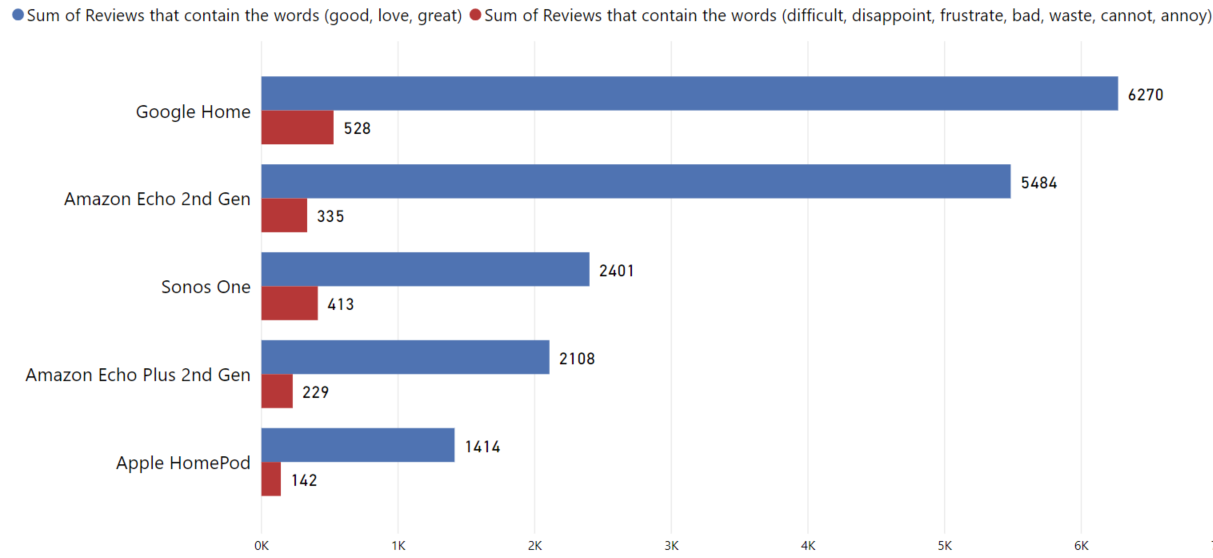
We analyzed customer sentiments based on the number of times the words listed below occurred in a review:
- The positive words analyzed are (good, love and great)
- The negative words analyzed are (difficult, disappoint, frustrate, bad, waste, cannot, annoy)
While describing Google Home and Amazon Echo 2nd Gen, customers have used positive words 6.2K and 5.4K times in their reviews. The negative words account for less than 10% of all the smart speaker reviews.
How Reliable are the Reviews for Smart Speakers?
We checked the reliability of the reviews gathered using FakeSpot and found that all smart speakers have more than 70% reliable reviews. Apple HomePod has the most reliable reviews (90%), followed by Sonos One (81.65%) and Amazon Echo Plus 2nd Gen (80%). Customer reviews about Google Home and Amazon Echo 2nd Gen are 71% reliable.
Customer Rating Trend for Smart Speakers
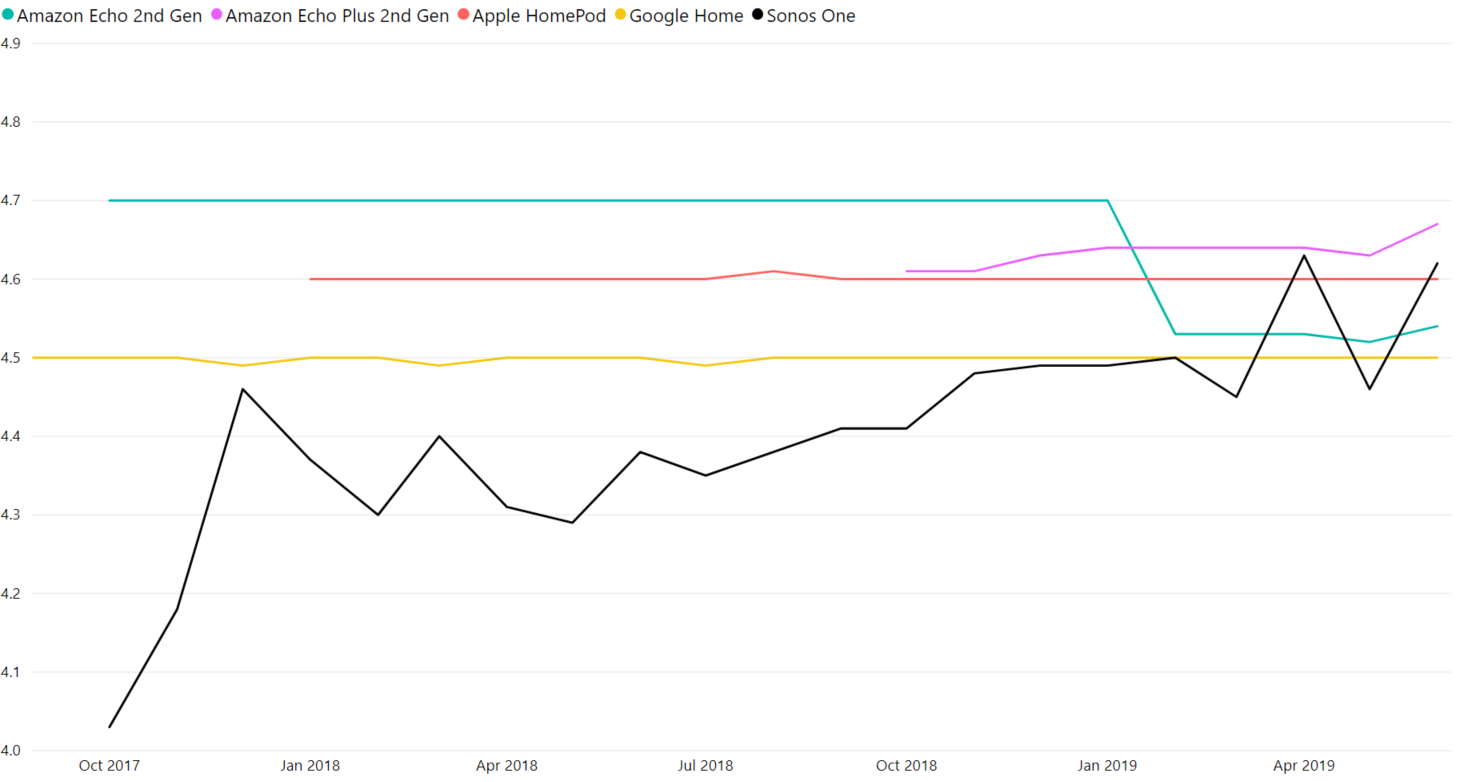
The graph above shows the trend of customer ratings for smart speakers since October 2017.
Amazon Echo Plus 2nd Gen (4.67), Sonos One (4.62) and Apple HomePod (4.60) have the top 3 average ratings as of July 2019.
Amazon Echo 2nd Gen (4.54) is the only smart speaker which witnessed a drop (0.16) in its average rating. Amazon Echo 2nd Gen went from being the top-rated smart speaker in early 2019 to being the fourth-best smart speaker when it comes to average rating by July 2019. Apple HomePod (4.60) and Google Home (4.50) have had a constant customer rating during this period.
Upward Trend of Sonos Customer Ratings
Sonos has shown significant improvement, from being the lowest-rated (4.03) smart speaker in 2017 to being the speaker with the second-highest average rating (4.62). Sonos ratings increased by 14.6% between October 2017 and July 2019. While others have only shown a slight improvement or a dip in their average ratings.
Read More – Most Popular Shoe Brands on Amazon
Embracing the Smart Home and Voice Assistants
One of the next big leaps in technology will be advancements in voice-enabled devices and customer interactions. Smart speakers were primarily a way for people to stream music or get the weather forecast, but they are now a critical step in the imminent shift towards a smart (connected) home. In the last 10 years, smart homes have seen a drastic change from services only available at home to the ability to control your home from anywhere. Smart speaker ownership grew by 40% in 2018 to reach 66.4M, comprising more than a quarter of the U.S. adults.
As multiple battle lines are drawn between voice assistants, brands are trying to find better methods to make daily tasks easier. They are focusing on enabling voice interaction on their own properties. Amazon already dominates the voice-enabled speaker market with 93K Alexa Skills in comparison to 4,253 Google Assistant Actions.
